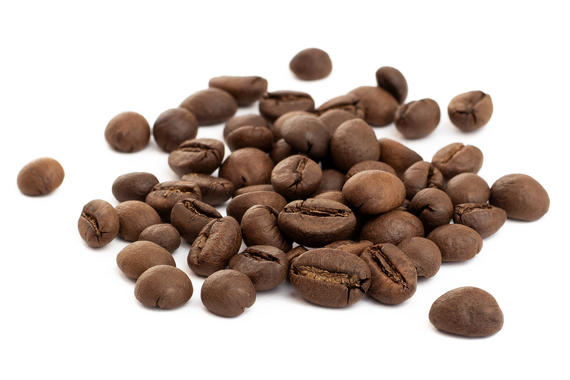cinibeans
ROBUSTA MEXICO CHIAPAS ORGANIC - COFFEE BEANS
ROBUSTA MEXICO CHIAPAS ORGANIC - COFFEE BEANS
Couldn't load pickup availability
Place of origin:
Mexico
Species:
Typica
Countryside:
Chiapas
Sea level f. m.:
1300-1700m
Taste:
Chocolate, Caramel, Citrus
Processing:
Wet
BIO:
Yes
Composition
100%
Crema and the taste of coffee
Robusta Mexico Chiapas BIO coffee beans are characterised by medium acidity, rich aroma, chocolate, caramel and citrus notes. In the cup, they produce a thick, higher and dense crema.
Origin of the coffee
Chiapas is a state in Mexico, characterised by a humid tropical climate. In the past, its lowlands were covered with rainforest, but it has had to give way to agricultural land. Coffee trees entered the country in 1954 in the Veracruz region. Decades later, the first plantations were established in the Chiapas region. It soon became Mexico's largest coffee producer. Although Mexican coffee is seldom talked about, it is one of the top-quality varieties with a strong fruit profile. Local farmers tend to have small, mountainous plantations. It is estimated that around half a million people in Mexico produce coffee and related industries. Mexico is also one of the world's largest producers of organic coffee.
The fruit of coffee trees is usually processed by washing. This means that after harvesting, workers transport them to so-called processing plants, where they are poured into water, whose flow pushes them through crushing plates. This removes the tight skin of the berries and, to some extent, the sweet flesh surrounding the green seeds. The next step is fermentation - the released coffee is transferred to a barrel of water where it remains for up to 36 hours, during which time the natural process dissolves the remaining mucilaginous pulp and pulp. After rinsing, the farmers spread the coffee on concrete slabs where it is left to dry thoroughly. During drying, the coffee must be raked frequently to prevent mould. Once this stage is over, the coffee is sorted and packed.
Let us briefly mention robusta, which is in some respects very different from arabica. Coffea robusta (actually Coffea canephora) is a plant native to sub-Saharan Africa. It reaches a height of 10 metres, has a higher yield than arabica, and its seeds contain more caffeine (2.7%; arabica 1.5%) and less sugar. At the same time, robusta is less susceptible to pests and therefore requires less industrial spraying and treatment during cultivation.
Taste and aroma
More gently roasted coffee offers a richer and more complex flavour profile. It better preserves the original nuances of the coffee-growing area, including fruity, floral or nutty notes.
Health benefits
In particular, quality coffee roasted to an ideal profile may contain higher levels of antioxidants such as chlorogenic acid and other phenolic compounds. These substances have anti-inflammatory and antioxidant effects. Unroasted premium coffee is also gentler on the stomach, as it contains fewer acids that can cause irritation.
Environmentally friendly
Plantation coffee is often grown with a greater respect for nature, with an emphasis on responsible farming and fair trade, which can have a positive impact on cultivation and communities.
Effects - coffees
Effects - rooibos
Effects -
.bylina-img-cont { max-width: 200px }
.bylina-img-cont img { max-width: 100%; height: auto }
$(function() {
var modal = $('#bylinaModal');
modal.on('show.bs.modal', function(e) {
$.get('/~zbozi-bylinacontent', {
bylina: $(e.target).attr('data-transfer')
}, function(payload) {
modal.find('.modal-title').html(payload.title);
modal.find('.modal-body').html(payload.body);
}, 'json');
});
});
Presentation of coffee packaging
The coffee is packaged in high quality aluminium packaging without any special graphics, as our company focuses on taste and quality. You can also check the actual freshness of the coffee thanks to the valve that releases the gases produced after roasting. Quality packaging that preserves the character of the coffee. Coffee is always hermetically packaged to resist moisture, light and external odours.
Presentation of coffee packaging
Instructions for use
Grind the coffee to a coarseness appropriate for the preparation method of your choice.Use at least 1.5-2 teaspoons (about 7 g) of ground coffee per cup.Pour water at about 95 °C over the coffee.

